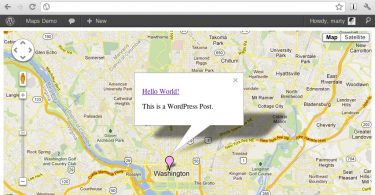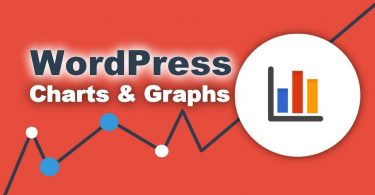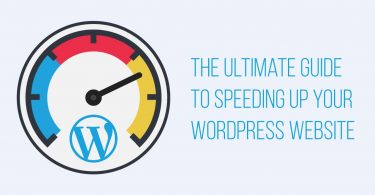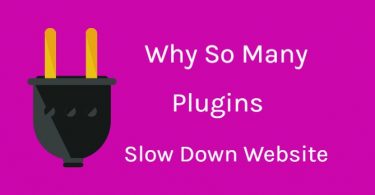WordPress is widely considered as the easiest as well as most powerful blogging and website content generation site today. It is because of this that millions of people and their website and businesses depend upon it. While it is easy to set up and use WordPress, it can be quite tricky when it comes to optimizing the speed and performance of the website using it. People are often caught struggling when their website suffers from various performance or speed related issues and they usually don’t have an idea about the factors contributing to it.
Why should you care about optimization of the WordPress performance?
If you’re one of those people who think performance and speed don’t matter when it comes to websites, you’re certainly not aware of the ground realities. There are hundreds of millions of websites in existence today, and like it or not, you can find one for almost anything. In this scenario, what really the compels users to choose one website or service over another is the experience. It is said that each second of delay causes customer satisfaction to go down by as much as 16%.
There is another crucial reason to take care of these factors. Popular search engines like Google and Bing take speed into consideration when it comes to their page ranking algorithms. Badly optimized websites can be pushed down in their search engine rankings as compared to a well-optimized one.
How to test your Website performance and ‘Page Load Time’?
Before we talk about ways to enhance the performance, we should first know where we stand. There are several tools available on the internet which can tell you about the loading time and various other parameters related to the performance of your website. You should take special care of the ‘Page Load Time’ since this is the most important factor considered for performance.
Some of the famous and well-recognized tools are:
This website uses Google Page Speed and Yahoo Yslow to check and grade the performance of your site. It shows the result in the chart which allows you to see which areas need to be improved. Registered candidates can run their check from many popular areas including London, Mumbai, Hong Kong, etc. (The default is Canada)
Pingdom is known for its extensive summary and insights. Performance grade, response codes, and content size are among various details it provides on your website. The test location can be selected from Melbourne, New York, Texas, Sweden and San Dose.
There are various other tools available like Web Page Test, SEO Site Checkup, etc., which are also really good.
What can you make your WordPress powered website more optimized?
There are various steps which can be taken to boost the speed and performance of your WordPress powered website and below are some of them which are most effective can significantly improve your website:
-
Choosing a good WordPress hosting for your website:
This is inarguably the most important step in your website performance but is also often ignored. People, especially beginners often seem excited by the idea of free hosting provided by various website hosting companies. The problem with this is that it is almost always a ‘shared hosting’ service.
Shared hosting simply means that you will have to share your server space with many other websites. This can severely impact your website’s performance as the other websites can take up a large chunk of that server space. And quite often, these types of servers are not properly managed by their administrators. So you see, this ‘free’ service comes with a heavy price.
A better alternative can be using dedicated cloud servers for your website, i.e., using dedicated hosting. Some good options are WP Engine (very popular), Digital Ocean, Amazon Cloud Services, Firebase, etc. Some of them like Digital Ocean and AWS can be tricky to set up but are extremely reliable.
-
Optimize your images
Images take up a lot of space which ultimately leads to more ‘Page Load Time’. Although they are very important to keep the visitors engaged and enhance the overall look and feel of your website, they often unneeded Metadata when uploaded directly. Images are often the most common cause of poorly performing websites.
There are some tools present which can help you manage your image related woes. Some of the commonly used tools and services to optimize images are TinyPNG which uses smart Image compression to optimize the images, ShortPixel Image Optimization which is a free WordPress tool, Smush Image Compression, and Optimization, among many others.
-
Configure a CDN
Your content should reach your visitors very fast irrespective of their location. But this is not always possible as their location from the actual data center can be thousands of miles and can result in lag. This is where CDN or a Content Delivery Network proves to be useful.
When a CDN is properly configured, it leads to faster load time for your websites as it will enable your website to use an optimized server which is located closest to your visitor. These server networks keep a cloned copy (consisting of static content and files) of your website on all of their nodes. This means whenever a visitor makes a request, this cached information will be provided to them instead of the actual servers which host the website.
Some of the tools to enable CDN for your website are MaxCDN, CacheFly, and Cloudflare. It should be kept in mind while choosing a CDN, the website popularity and needs should be taken care of.
-
Minimize your HTML, CSS, and JavaScript
HTML, CSS and JavaScript files make up your website. Minimizing these files will lead to a more lean and efficient backend for your website. This will reduce the file size of these HTML, CSS and JavaScript files by removing unnecessary characters like line breaks and spaces and also the comments. The resulting website will run faster because of reduced data that has to be transferred from servers to the user machines.
Some of the popular plugins for this purpose include Autoptimize, WP Minify, and W3 Total Cache. These can be chosen on the basis of convenience and requirement.
-
Use a great Caching Plugin
If your website involves static CSS, HTML or JavaScript files which don’t change frequently, you can use browser side caching to speed up your website loading speed drastically.
What this does is that it stores the content of your website locally in your browser so that when someone returns to your website, the same stored content can be used instead of making a new request to your server. This is a very important step which can really influence the ‘Page Load Time’ of your website.
Some common plugins and tools to enable this includes W3 Total Cache (very popular), WPBeginner and WP Super Cache, among several others.
-
Optimize your WordPress database
Your database stores several information which you aren’t going to need at all. These information includes old drafts of your content, fake users, spam comments, etc. Deleting these unnecessary data will also reduce the size of backup of this database. This will result in faster and smoother running of your WordPress website.
Some common tools which can be used for this purpose are WP-DBManager which allows you to backup, restore, optimize and repair your database. There’s another famous one called WP-Optimize which can be used to do several of these tasks.
-
Enable gZIP compression
This means compression the files which are sent from your servers to your visitors. gZIP compression can be enabled for your images, CSS and JavaScript files. The webserver will compress the files before sending it to user and the user’s browser will decompress it before showing it to the user. This step significantly lowers the loading time for your website.
This link can be referred for enabling gZIP compression for your WordPress website
-
Deactivate and uninstall non-efficient or rarely used plugins
A large amount of junk is added by keeping unwanted or inefficient plugins attached to your website. The backup size is increased, there is huge load on your servers, and all in all, it’s not worth keeping them. You can look for third-party alternatives for similar functionalities instead of using the traditional plugins.
The popular web services to do this are Zapier and IFTTT which automates these kinds of tasks.
-
Disable pingbacks and tracebacks
Pingbacks and tracebacks are two of the popular components of WordPress which will tell you whenever your webpage receives a link. This puts a lot of strain on resources of your servers as other people with those links to access an image or a something else without you even wanting them to do so. This functionality is very popular when attempting a DDoS attack on a website.
This can be disables via: WP-Admin -> Settings -> Discussion.Just deselect “Allow link notifications from other blogs (pingbacks and trackbacks)”.







